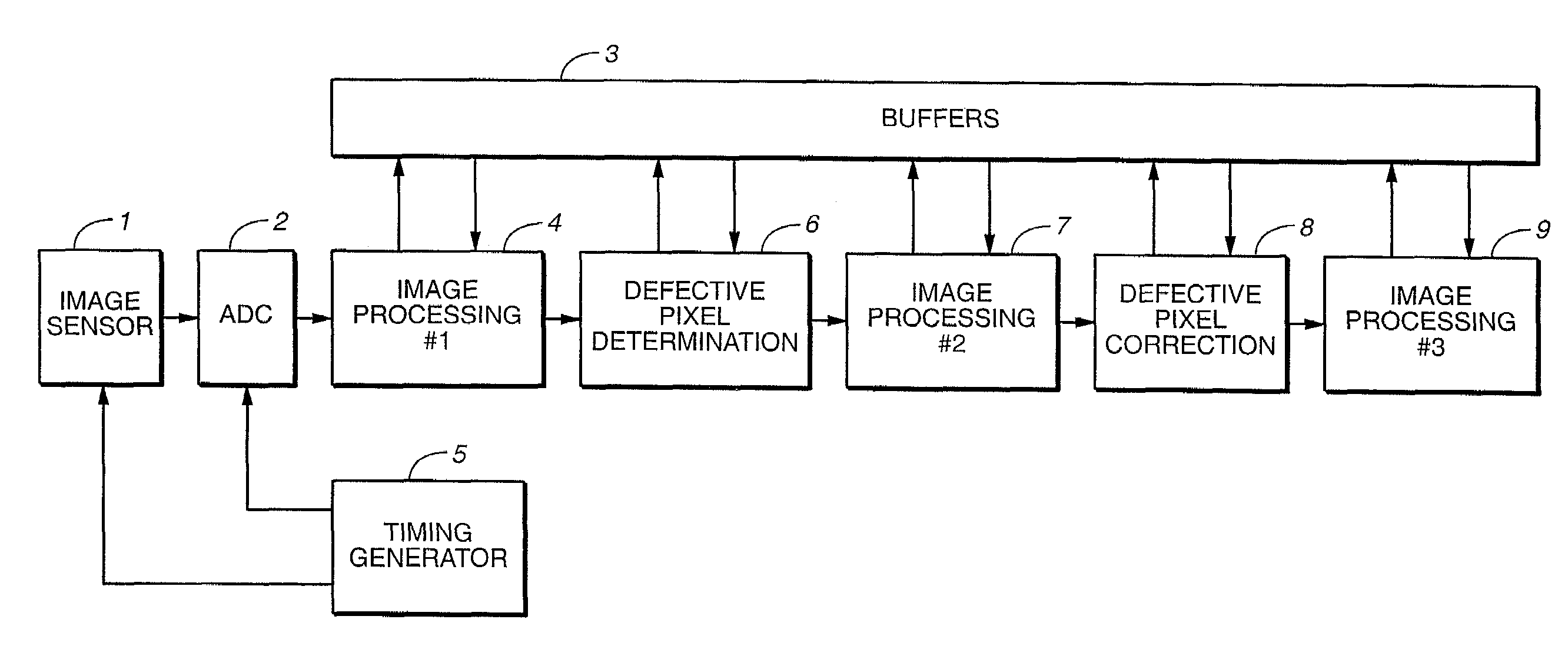Dynamic identification and correction of defective pixels
a dynamic identification and correction technology, applied in the field of image sensors, can solve the problems of further testing of given pixels, considered to be defective, etc., and achieve the effect of reducing the complexity and cost of the device, and eliminating the time-consuming and costly calibration process to define the location of defective pixels
- Summary
- Abstract
- Description
- Claims
- Application Information
AI Technical Summary
Benefits of technology
Problems solved by technology
Method used
Image
Examples
Embodiment Construction
[0013]As depicted in FIG. 1, a camera includes an image sensor 1 that provides analog signals proportional to the light impinging on the sensor. The sensor signal is connected to an analog-to-digital converter (ADC) 2, which translates the sensor analog signals into digital signals. A timing generator 5 controls operation of the sensor 1 and the ADC 2. The digitized sensor output data then go through a chain of processing stages. Two of these stages are defective pixel determination 6, which identifies defective pixels, and defective pixel correction 8, which corrects a located defective pixel from outputs of pixels neighboring the identified defective pixel. Image processing stages 4, 7 or 9 may or may not be included. Each one of the processing chain stages can use the buffer 3 to pass the processed image data to succeeding stages, and can employ the buffers 3 for temporary storage of data created as part of the processing performed. The camera also includes an optical system (not...
PUM
 Login to View More
Login to View More Abstract
Description
Claims
Application Information
 Login to View More
Login to View More - R&D
- Intellectual Property
- Life Sciences
- Materials
- Tech Scout
- Unparalleled Data Quality
- Higher Quality Content
- 60% Fewer Hallucinations
Browse by: Latest US Patents, China's latest patents, Technical Efficacy Thesaurus, Application Domain, Technology Topic, Popular Technical Reports.
© 2025 PatSnap. All rights reserved.Legal|Privacy policy|Modern Slavery Act Transparency Statement|Sitemap|About US| Contact US: help@patsnap.com



